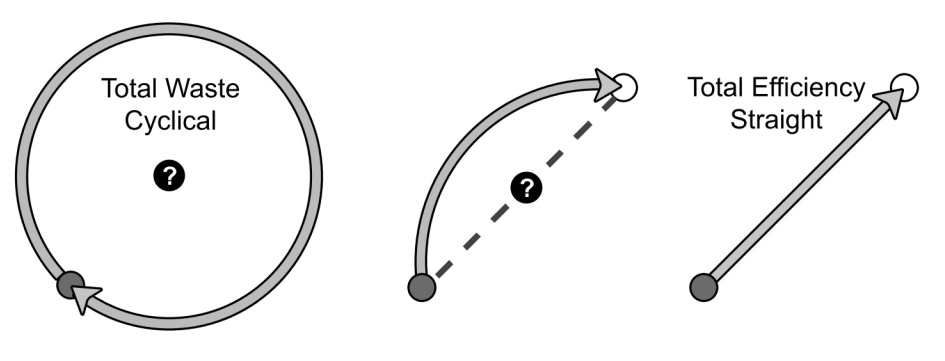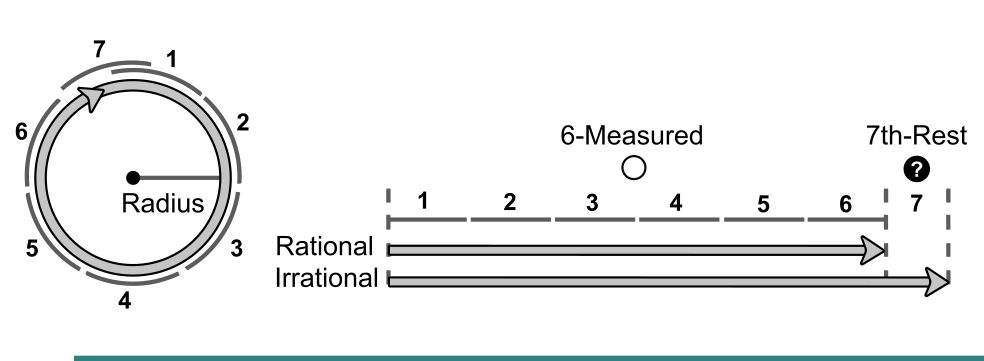Time As Irrationality and Space as Rationality
That which is crooked cannot be rectified, and that which is wanting cannot be numbered (Ecclesiastes 1:15)
To show the connections between rationality, straightness, efficiency, and ‘space’ as well as irrationality, crookedness, wastefulness, and ‘time’ … the notion of traveling will serve as a basic example of work:
In the diagram above, two paths lead from the same starting point to the same destination point. Comparing the lengths of these trajectories demonstrates how the crooked path is necessarily longer than the straight one. The extra length proves that part of the crooked path was “wasted away” and “distracted away” from the first intention of the journey. In other words, the crooked path is not entirely the expression of reason and work, at least not with regard to the intent of the journey. So the crooked path really contains two very different components: 1) a part that expresses a positive principle and is characterized by reason and efficiency, and 2) a part that expresses a negative principle and is characterized by wastefulness and pointlessness.
The diagram below illustrates why “cyclical” rather than “crooked” should be considered the opposite of “straight.” Straightness (or directness) implies total efficiency, meaning the entire trajectory was determined solely by the destination. In this case, every part of the path is reasonable, and every effort counts as work toward the goal. On the opposite end, a fully cyclical trajectory ends up exactly where it started. It turns completely around a negative obstacle, which results in absolute waste, vanity, and pointlessness overall.
In the narrative of creation, the meaning of the numbers six and seven comes from the parallels between working and counting. The number seven symbolizes the inability to correctly measure the cycle with its radius, which yields a measurement of six and a little bit more. This “rest” demonstrates that cyclical continuity can never be subsumed by the square patterns of reason and ‘space’ because there is always a remainder. In other words, the complete cycle is an unanswerable riddle.
The number 7 represents the natural law of the cycle, and the seventh part of that cycle symbolizes the irrational period when the end transforms into a new beginning. It is the strange moment when the cycle finally “swallows itself” in the confusion of first and last. This type of inversion is forbidden by the hierarchical “law of space” during periods of work and productivity. However, during the critical seventh period, space loses its grip on reality as it returns to more primitive cyclical conditions. In the Bible, this “returning to irrationality” is often symbolized as flooding on the cosmic scale and as carnivals, Sabbaths, and Jubilees on the human scale.
Footnotes
-
Pageau, Matthieu (May 29, 2018). The Language of Creation: Cosmic Symbolism in Genesis: A Commentary (“LoC”). ch 44 ↩


